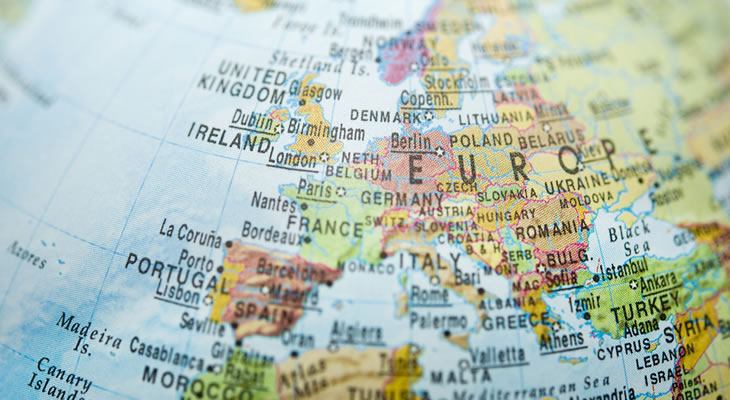Pound Sterling Euro (GBP/EUR) Exchange Rate Boosted by Dire Eurozone Growth
UPDATE: The Pound Sterling Euro (GBP/EUR) exchange rate rose by around 0.3%. This left the pairing trading at around €1.1080.
The Pound was able to make gains against the single currency on Friday after data showed the bloc recorded its deepest contraction on record.
Flash second quarter GDP figures revealed the Eurozone shrank by -12.1% in Q2. This was the deepest fall since the series began in 1995.
Separate data also revealed that Spain recorded the worst fall in output, as the economy shrank by -18.5% quarter-on-quarter.
However, separate data revealed the bloc’s inflation continued to follow an upward trend. This defied expectations of a slowdown and supported the central bank’s belief that a negative headline reading will be avoided.
Eurostat revealed consumer prices rose by 0.4% in July after a 0.3% increase just a month before. Core inflation also edged higher from 0.8% to 1.2% in July.
Pound Sterling Euro (GBP/EUR) Exchange Rate Muted as France Sinks Deeper into Recession
The Pound Sterling Euro (GBP/EUR) exchange rate remained flat at the end of the week. This left the pairing trading at around €1.1045.
The single currency remained flat after Friday morning’s data revealed the French economy shrank by a record -13.8% in the second quarter.
However, this was post-war record drop as activity came to a halt during the coronavirus lockdown was shallower than expected.
The contraction in the bloc’s second-largest economy following a steep decline in Germany’s GDP. Although, the decline in France was steeper.
In a tweet, Allianz chief economist Ludovic Subran wrote:
‘Not too bad! We were expecting -16% but deconfinement saved the day.’
This was the third consecutive decline in GDP for France, which is already in a recession which likely weighed on the Euro.
Sterling (GBP) Flat as Attention Turns to the BoE
The Pound remained flat today as the Bank of England (BoE) is expected to shed light on how fast it expected Britain’s economy will rebound from the coronavirus crisis.
However, markets expect the bank is unlikely to add the £100 billion of stimulus it announced last month.
Britain shrank by close to a quarter between February and May and many economists expect it will be years before the economy will return to pre-coronavirus levels.
The stimulus that was announced in June will fund bond purchases until next year, and Investec economist Philip Shaw noted that this suggests the November will be the next key decision.
Shaw said:
‘For now, we’re at: ‘Okay, let’s set the tiller steady … keep rates on hold, and just see what’s going on in the economy.’
BoE Governor, Andrew Bailey is also expected to be asked about the bank’s position on negative interest rates. This is something he said the bank will consider, and Shaw noted:
‘Banks have to have time to implement a possible negative rate structure, and there are all sorts of technical complications as well.’
Pound Euro Outlook: Manufacturing PMIs in Focus Next Week
Looking ahead to the start of next week, the Euro (EUR) could make some gains against the Pound (GBP) following the release of the latest PMI data.
If manufacturing PMIs from across the Eurozone impress investors and show the bloc is starting to recover from the coronavirus crisis, it will offer the single currency an upswing of support.
However, Sterling could claw back some losses following the release of Britain’s manufacturing PMI which is expected to show stronger growth in July.
If the UK’s PMI rises higher than expected, it will boost Sterling and leave the Pound Euro (GBP/EUR) exchange rate flat.


Comments are closed.